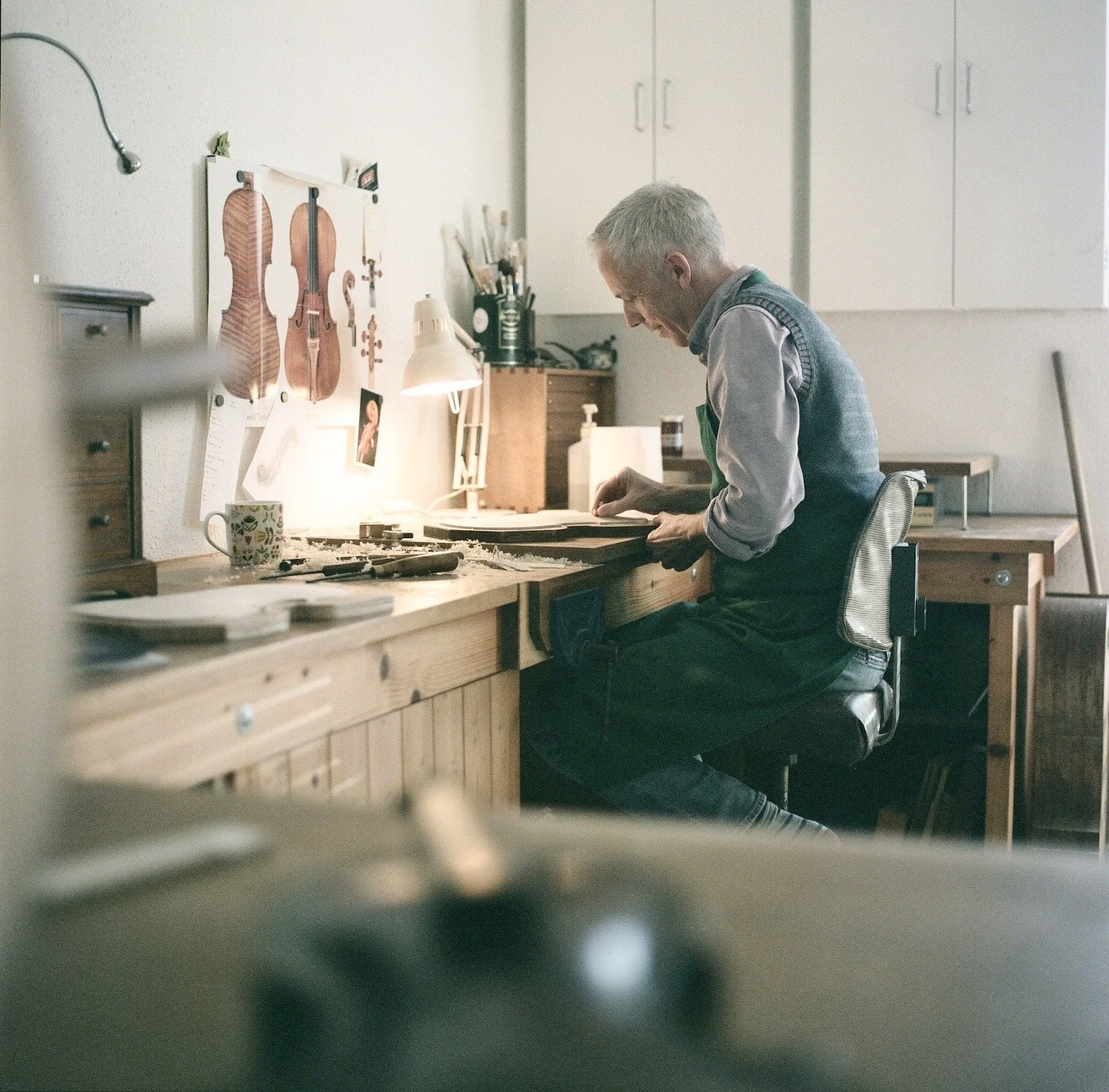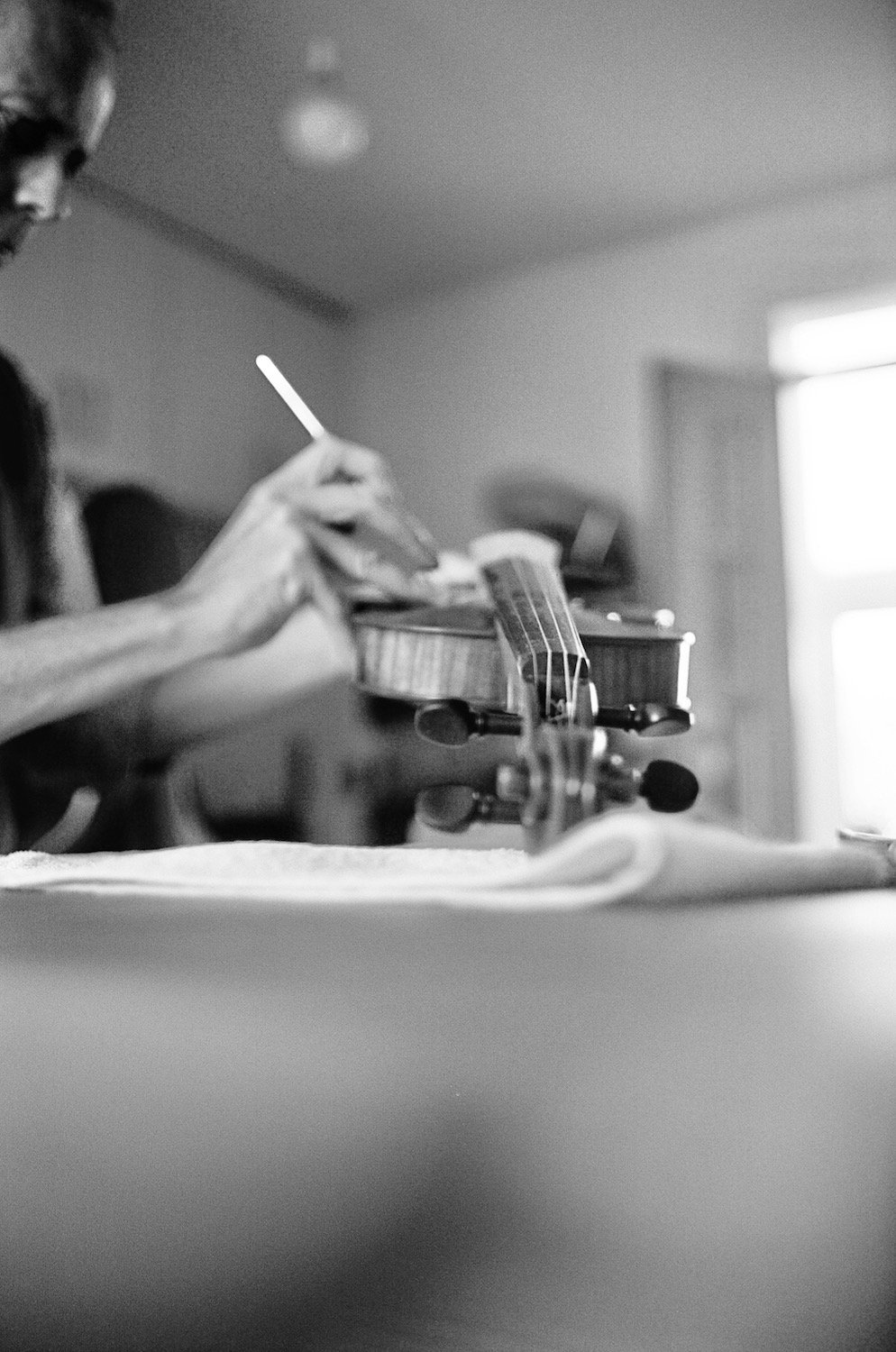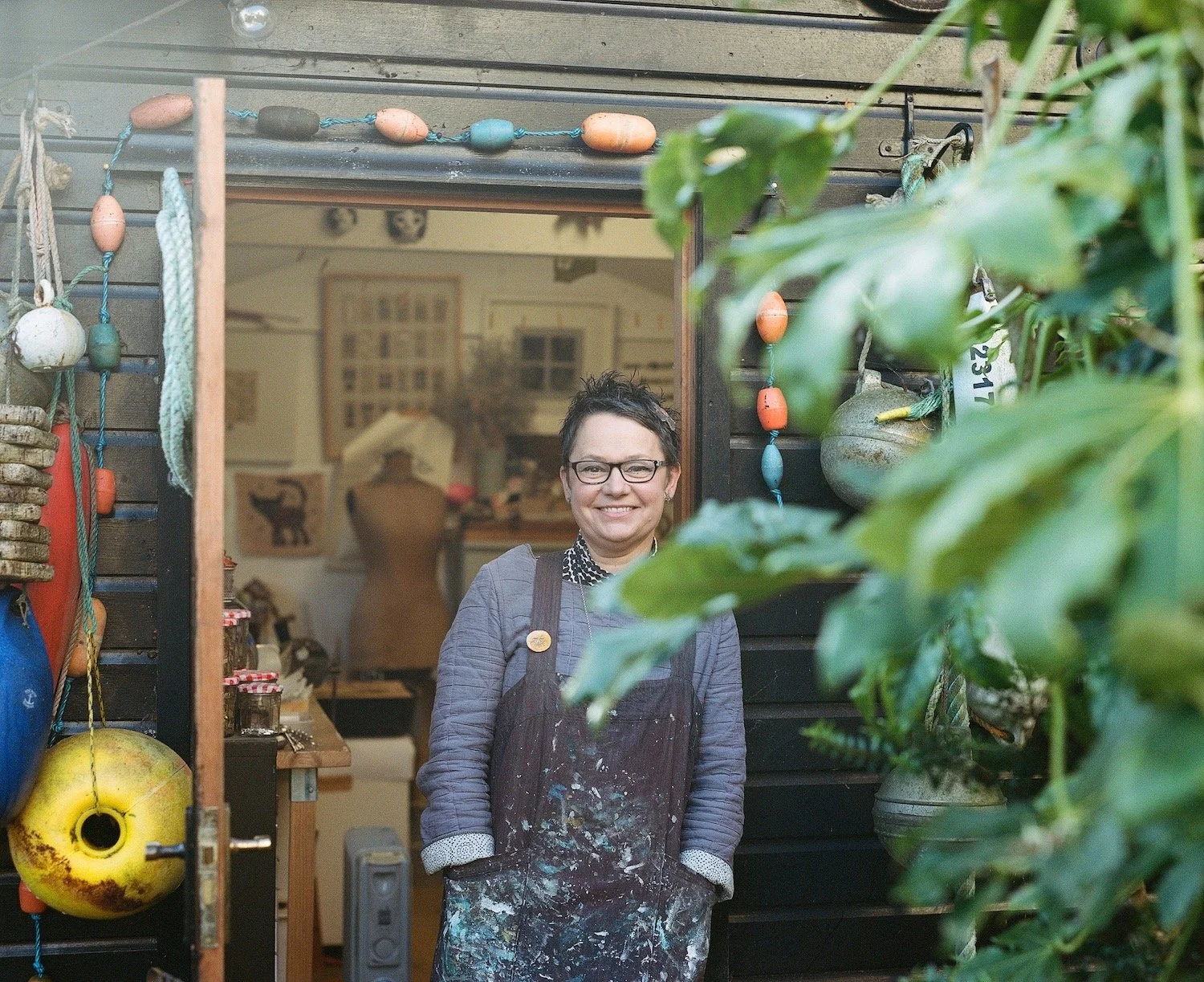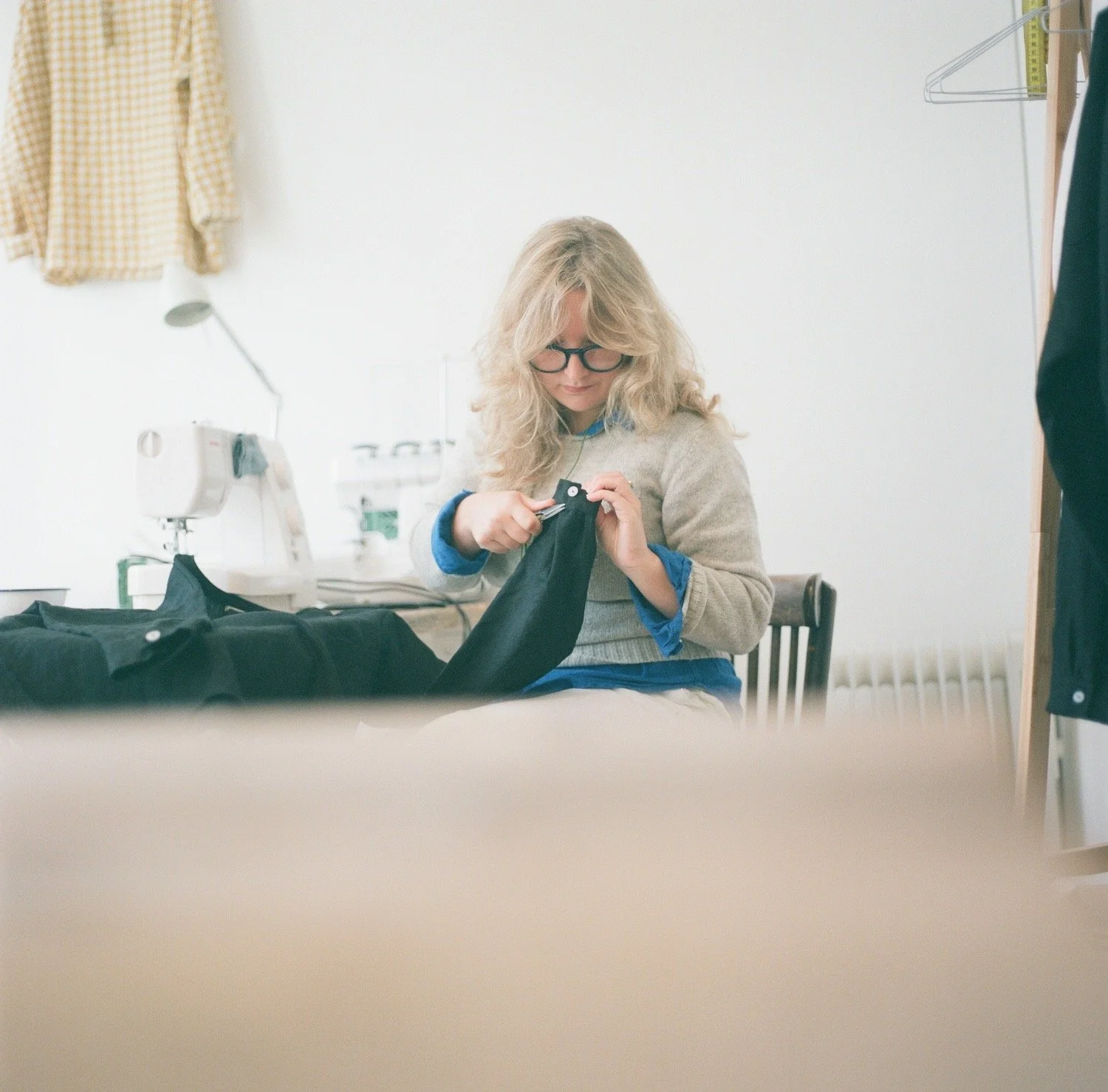a violin maker
It still amazes me at the shear volume of talented creatives who live and work down here in Cornwall. All specialists in their own unique way and some of us who have amassed decades of experience in what we do best. Mark is one such individual who’s skills and talents are amazing to witness and to document. For the past 26 years, Mark has been a violin maker.
It all started for Mark at Merton College, South London where he embarked upon a two year foundation course on the making and repairing of musical instruments. All types of instruments from brass, woodwind, guitar, violin, and pipe organ. A rather diverse selection you might say. On from there, Mark then moved onto the Newark School of Violin Making and studied there for the next 3 years. When Mark looks back now, there were seven such establishments when he trained but today there are only three. A dying craft one might say but there still appears to be the interest form the youth of today.
Mark’s transition from London to Cornwall happened back in 1999 and this is where we find him today, the only violin maker in the county. Alongside the violins he makes, he has a varied client base who choose to bring their instruments to Mark for fine tuning and repairs. A personal touch you might say. Let’s be honest here, for those who do seek out Mark’s experience and skills, they certainly don’t post or courier these delicate items to him. One such item sat in Mark’s workshop waiting for a repair, a 19th century cello still in its wooden case and of course was delivered by its owner. A specialist market requires that one to one personal service.
As with most things these days, if the Chinese can make it they will, Mark informed me that the Chinese do indeed make good violins but generally speaking these are for the student and lower end of the market. Mark’s violins are certainly not that and fetch upwards of ten thousand pound plus. These violins are not something that one can make in a hurry. Lead times on a completed violin from Mark’s would be gauged in months from that initial client meeting to the finished article.
“violin bows are made from approximately 150-170 horse hairs”
In terms of construction, I had no idea whatsoever as to what type of wood a violin maker would choose to build such an item, but Mark did enlightened me “The woods that I use are Maple for the scroll (head), back and sides and Spruce for the fronts. This generally comes from the Balkans (Maple) and the Alps (Spruce) and the specialist timber merchants that I use are in Bavaria, Germany. Sometimes I visit, sometimes I trust him to send over what I need”.
I dont know why but I had this impression as to where Mark might work out of prior to my visit. I thought it might be a wooden shed or workshop in his back garden, dimly lit with piles of wood shavings and old school tools everywhere. How far from the truth I was. Mark’s whole set up and work space is a well organised space and work station within his home. Tools that have their own special place, wood stacked neatly and rows of violins in a glass fronted cabinet. A huge bench sits in the centre of his workspace, the same bench that he purchased when he first set himself up.
An interesting fact for you here that rather quashed my idea that violin bow strings are made from cat gut, that’s simply not the case. In fact, these are made out of horse hair. Somewhere in the region of 150 to 170 hairs. The bows themselves can cost you up to three thousand plus for a handmade professional one.
Thank you for the brief but knowledgeable lesson in the art of violin making Mark, it was enlightening. RD













